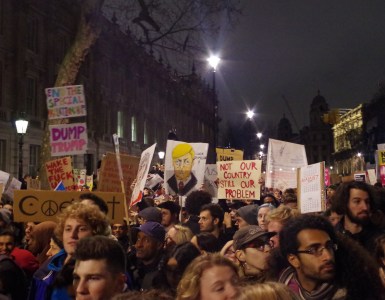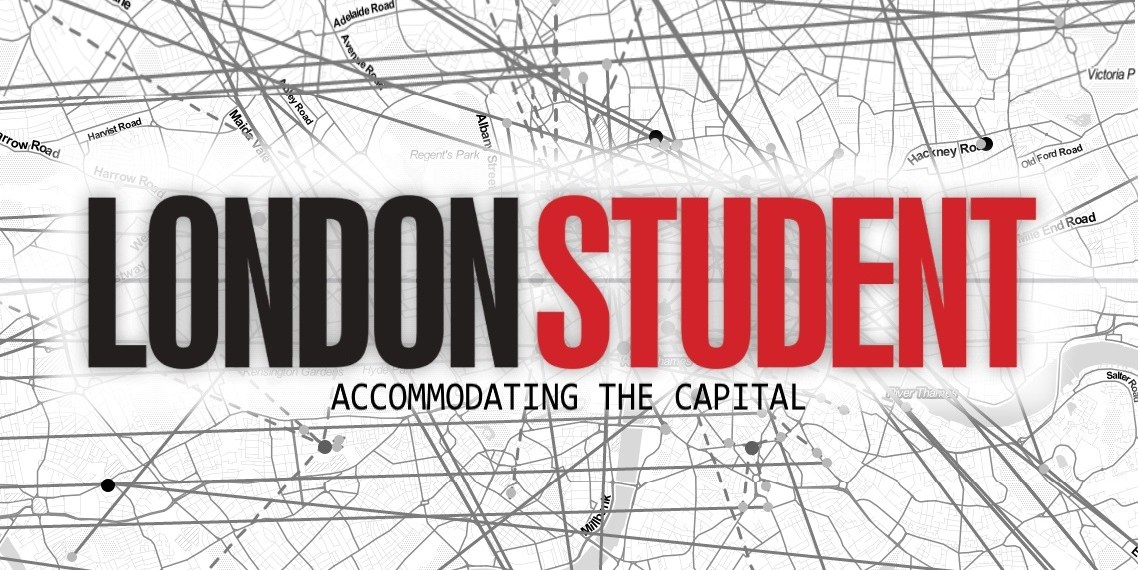“We are very unhappy about Trump as most people are, and that he’s banning these people is absolutely horrific. It is indescribable. We’re protesting that, and the fact that Theresa May has been over to pay him her respects, which is horrifying as well… The combination is a really bad cocktail.”
Usually, large demonstrations gain numbers by attracting an eclectic group of people concerned with diverse issues that merge under the same umbrella. The women’s marches last month, for example, gathered millions all over the globe, from old second wave feminists to intersectional feminists. It is less common to find masses in complete agreement of the cause they are defending. While following a very broad discourse and hardly defending any further course of action, this was what we encountered in the demonstrations that took place on Monday January 30 in front of Downing Street.
“I’m worried about the world’s future with Donald Trump as America’s president. I don’t think this country’s government should be inviting him here; I don’t want to see his kind of racism and sexism and homophobia spread down the globe. So I am going to stand up and say no to Trump.”
Rejection of the Muslim ban, disagreement with the Prime Minister’s diplomatic visit to the White House, and a general discontent with the direction that American politics are headed towards were the immediate responses provided by everybody we talked to. From “middle-class pensioners” proudly signaling to their demographics on their banners to families with their politically informed 10-year-olds, the demonstration organized by Owen Jones shut off Whitehall, with people crowding the road from Charing Cross to Parliament Square.
Sound equipment to broadcast the speeches to the whole crowd – with speakers ranging from Ed Miliband to Malia Bouattia - proved useless under the drumming and chanting. By now President Trump must be used to crowds calling “let them in”, with demos in American International Airports as well as in Central London, and to catchy melody of “hey, ho, Donald Trump has got to go”.
“What he is doing is illegal, it is unconstitutional. If we don’t voice our opinions, how else can we tell him tell him that what he’s doing is wrong?”
The crowd was a diverse one, with Brits, Americans, first generation migrants and students who only moved to the city recently. Many spoke of their desire to “show unity at this time” and to act while protest can make a difference - this, people told us, is a time “when it is unacceptable to stay silent and not vocalize [our] views”.
Many also made a link between the American and the British government: there had been a time to protest President Trump, but Monday’s protest was an opportunity to voice concerns about Theresa May’s relationship with the new president.
“I think when you have this many people in one place you realize how powerful it can be. Every individual on their own is not really making a point but when we are this many people… It is quite amazing.”
“It seems like it is provocation, he wants to get a reaction, he wants to get the reaction he is after, so that he can justify an expansion of his unique style of politics”, said one of the protesters, a British-Syrian sarcastically holding a sign that read “I miss Bush”.
His concern, specifically, was that actions such as the ones suggested by the President’s set of Executive Orders (the travel ban being the tipping point) will result into a violent response, which in turn will justify and legitimize the use of more violence. We reject fatalism, but cannot disagree with the simple –and certainly non-alternative- fact that President Trump has managed to incite a popular response.
The responses included in this article have been edited and condensed for the sake of clarity.





Add comment